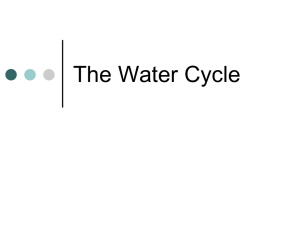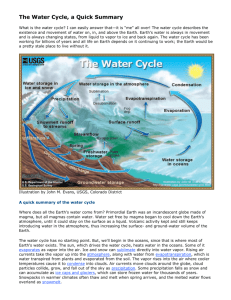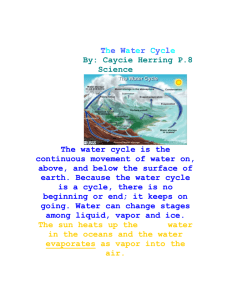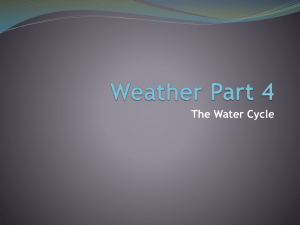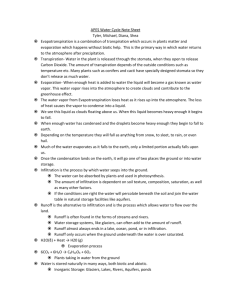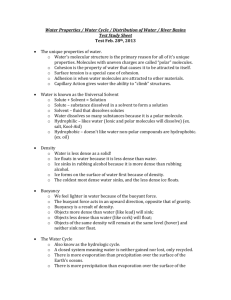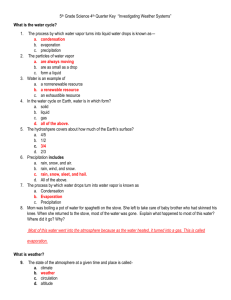GEOG 1301 UNIT REVIEWS
advertisement
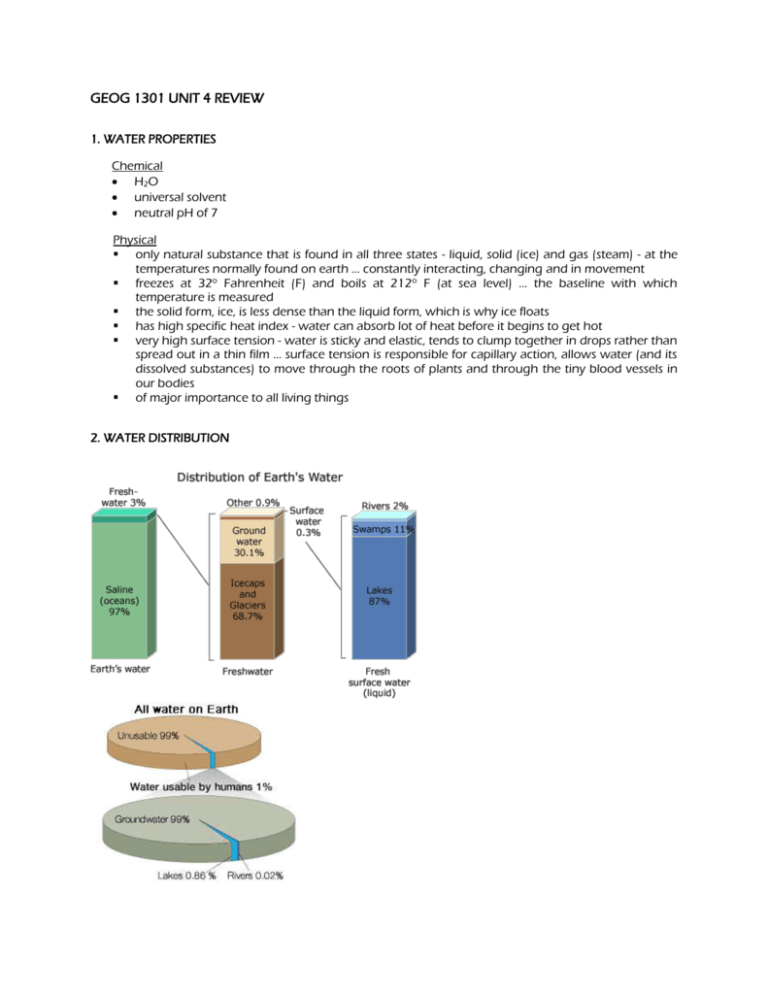
GEOG 1301 UNIT 4 REVIEW 1. WATER PROPERTIES Chemical H2O universal solvent neutral pH of 7 Physical only natural substance that is found in all three states - liquid, solid (ice) and gas (steam) - at the temperatures normally found on earth … constantly interacting, changing and in movement freezes at 32o Fahrenheit (F) and boils at 212o F (at sea level) … the baseline with which temperature is measured the solid form, ice, is less dense than the liquid form, which is why ice floats has high specific heat index - water can absorb lot of heat before it begins to get hot very high surface tension - water is sticky and elastic, tends to clump together in drops rather than spread out in a thin film … surface tension is responsible for capillary action, allows water (and its dissolved substances) to move through the roots of plants and through the tiny blood vessels in our bodies of major importance to all living things 2. WATER DISTRIBUTION 3. THE WATER CYCLE 1. Water storage in oceans: Saline water existing in oceans and inland seas 2. Evaporation: The process by which water is changed from liquid to a gas or vapor Evaporation drives the water cycle 3. Sublimation: The changing of snow or ice to water vapor without melting 4. Evapotranspiration: The process by which water vapor is discharged to the atmosphere as a result of evaporation from the soil and transpiration by plants Transpiration: The release of water from plant leaves 5. Water storage in the atmosphere: Water stored in the atmosphere as vapor, clouds and humidity 6. Condensation: The process by which water is changed from vapor to liquid 7. Precipitation: The discharge of water, in liquid or solid state, out of the atmosphere, generally on a land or water surface 8. Water storage in ice and snow: Freshwater stored in frozen form, generally in glaciers, ice fields and snowfields 9. Snowmelt runoff to streams: The movement of water as surface runoff from snow and ice to surface water 10. Surface runoff: Precipitation runoff which travels over soil surface to nearest stream channel 11. Stream flow: The movement of water in a natural channel, such as a river 12. Freshwater storage: Freshwater existing on the Earth's surface 13. Infiltration: The downward movement of water from the land surface into soil or porous rock Ground water begins as precipitation 14. Ground-water storage: Water existing for long periods below the Earth's surface Stored water as part of the water cycle 15. Ground-water discharge: The movement of water out of the ground Ground water flows underground 16. Spring: Place where a concentrated discharge of ground water flows at the ground surface
